By Natural Language Processing, we usually understand the process of computing and understanding human language through systems. This is a kind of Computer Linguistics, which allows it to be used in machine translation, language recognition, text analysis, and other areas. In summary, Natural Language Processing, or NLP is a symbiosis of Artificial Intelligence and Linguistics. As a consequence of its use, computers can understand, interpret and manipulate human language no worse than you and I.
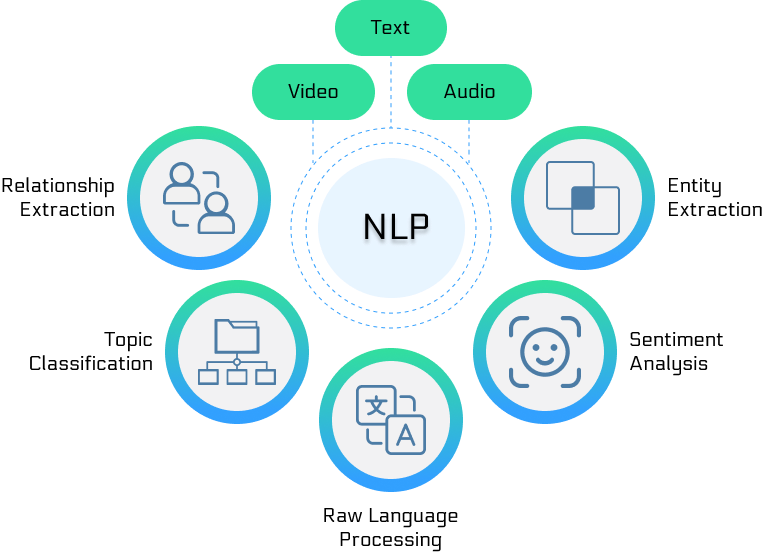
How NLP Works
NLP algorithms are trained using Machine Learning, that is, following predefined rules and thus receiving the textual data it needs, constantly improving the quality of the text. It should be considered as a process that exists at several levels accessible to Machine Understanding and Processing:
- Morphological level – understanding of the structure of words and their relationships with each other.
- Syntactic level – correct construction and structure of sentences.
- Phonetic level – construction of sound and its understanding as a physical entity.
- Semantic level – literal understanding of words, sentences, and phrases.
- Lexical level – processing and understanding parts of speech.
- Pragmatic level – use of real knowledge for the correct construction of the context.
- Discourse level – understanding of parts that exceed one sentence.

Natural Language Understanding (NLU)
NLP can be conventionally divided into two branches:
Natural Language Understanding (NLU)
Natural Language Generation (NLG).
The meaning and knowledge that computers receive from human speech are referred to as NLU. This allows you to automate the creation of a huge knowledge base, that will already be structured and readable.

Natural Language Generation (NLG)
As for Natural Language Generation (NLG), it can be directed in three scenarios:
Text data – generating text to explain or describe a structured or unstructured record.
Text to text – the unification of a huge number of linguistic sources into one consistent one.
Dialogue – creating text as part of an interactive conversation that exists between several participants.
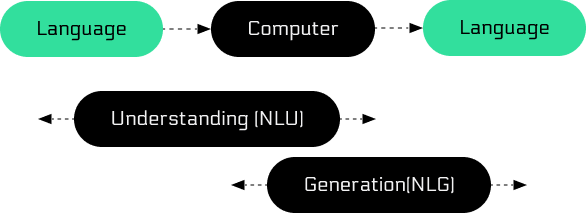
NLP helps to close the gap between people and computers, allowing them to interact with each other.
Tasks of NLP
We perceive human language through the prism of our habits, emotions, and intonations, but when analyzed systematically. It is full of ambiguity, homonyms, idioms, metaphors, and all the other exceptions that make writing software difficult. However, machines have learned to cope with all the difficulties, provide us with ready-made text, and facilitate our work. Depending on the needs and goals, there are quite a lot of tasks in the NLP pipeline, but we will consider only the most common ones.
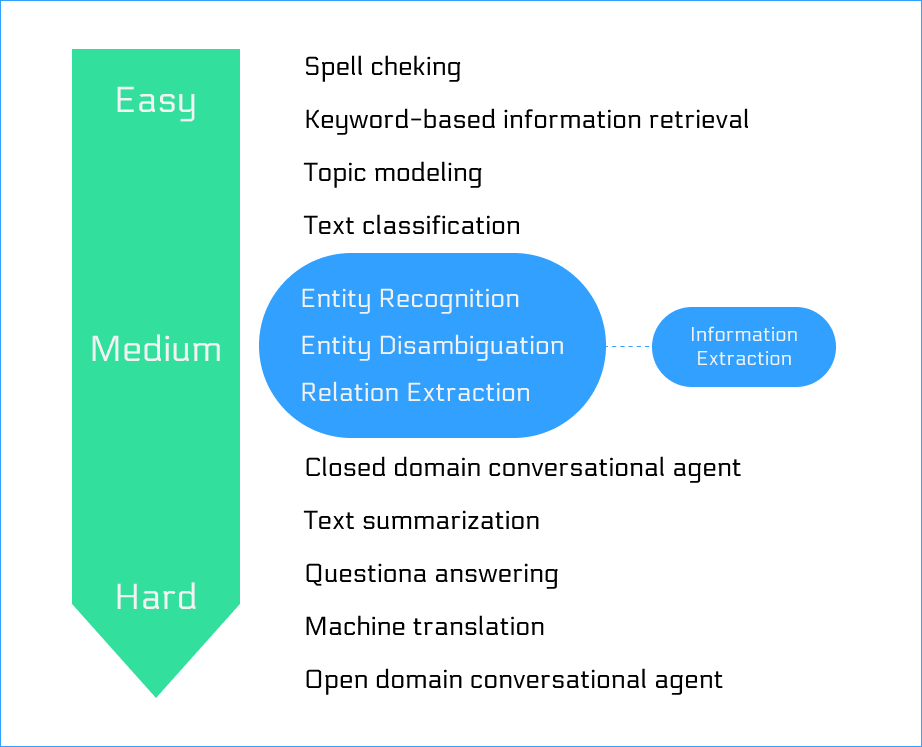
Automatic Speech Recognition or ASR
One of the most popular NLP tasks involves the reliable transformation of voice data into full-fledged text. The real challenge for systems is the peculiarities and individuality of human speech – the vagueness, accent, intonation, speed, and stresses – all of these are of great importance for text processing. However, human speech recognition tools have a fairly low rate of word error.
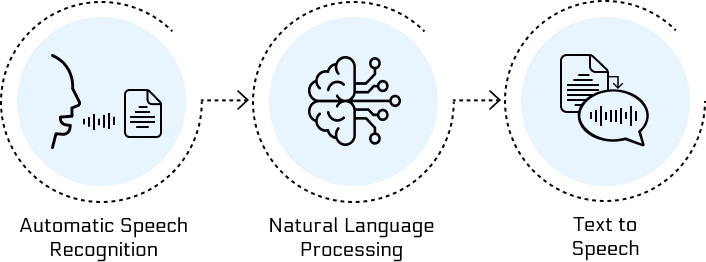
Text Classification
In this case, the system faces the task of assigning a category or class to a certain fragment of text entered in natural language. Machine Learning Algorithms divide voluminous fragments of documents or text Data into categories, which allows for the optimization of work processes. Such classification has many applications, including filtering spam or analyzing medical devices.
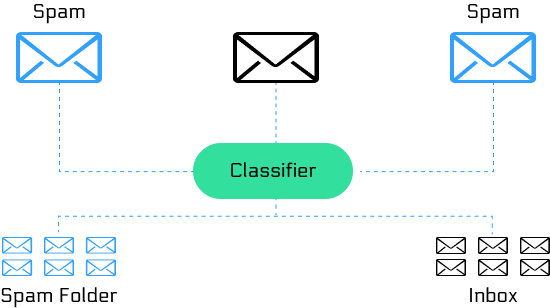
Word Disambiguation (WSD)
Using semantic analysis, polysemous words are reduced to the meaning that makes the most sense in the given context. The software helps to disambiguate texts and distinguish between their meanings. Here, again, Machine Learning algorithms are used, working on the basis of improving context identification.

Text-to-speech (TTS)
The opposite task of ASR is converting text to audio. Then the task of NLP is to justify the information and give it in human language. Such software is widely used in visual aids and makes the product or content more inclusive. This allows people with disabilities to use certain services.

Topic Modeling
The main purpose of segmentation is to extract key topics from a document. The system analyzes various linguistic features, such as repeated references to the topic or events, the use of certain phrases of the language to create a connection between ideas, the repetition of vocabulary, and others. Each of these aspects is measured to build a thematic model, which in turn is built using Machine Learning or Statistical methods. At the same time, the complexity of such a model already depends on the information available in it.
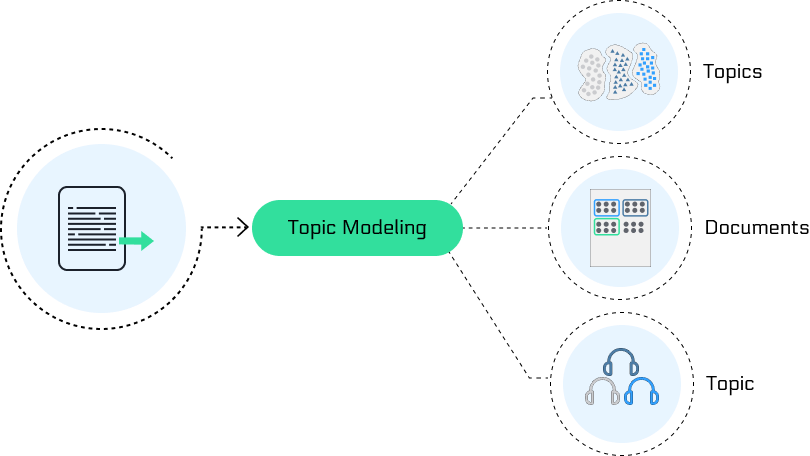
Sentiment Analysis
The analysis of feelings is also called the analysis of thoughts aimed at understanding the feelings or attitude of an object based on its text. With the help of NLP algorithms, mood points are assigned to certain words, based on the lexical series with which feelings are associated. The model classifies text based on emotions and even intentions. In this way, the system can analyze whether it has a complaint, a request, or an opinion. The use of such a service is reduced even to reviews of products in the supermarket, not to mention the widespread use in the marketing field to assess the level of sales and customer interest.

Top NLP Tools and Services
Now that we have understood the potential of NLP and its possibilities, it is worth considering how to work with it. You can start using NLP either through open-source libraries or through SaaS tools – ready-made and powerful cloud solutions. The advantage of this method is that SaaS platforms offer pre-trained models that users can interpret without code and without an API. Open-source libraries, on the other hand, allow you to fully customize your NLP tools but require experience with Machine Learning. However, in this case, you need to take care of building the infrastructure from scratch, using open-source libraries.
Open Resources Include:
Apache OpenNLP is a long-term tool that uses Java NLP libraries with Python decorators, just like Stanford CoreNLP.
SpaCy is a Python and Cython library that provides ready-made statistical models and word vectors, supporting the tokenization of more than 49 languages. Thanks to this, the library can be considered one of the best, which allows you to correctly divide the text into articles, punctuation marks, etc.
Natural Language Toolkit (NLTK) – is an open-source program based on Python NLP. Such a tool provides users with a basic set of tools for performing text tasks. These include text categorization, entity extraction, tokenization, parsing, stemming, semantic reasoning, etc.
The Stanford NLP Library is a multi-purpose text analysis tool that offers various natural language processing services. The main advantage of such a library is the scalability of NLP technologies. It is ideal for working with a large amount of data and complex calculations.
SaaS Platforms:
Google Cloud – an instrument containing pre-made models for sentiment analysis, object extraction, or content categorization. It already has AutoML natural language implemented, which creates opportunities for building your own Machine Learning model. it is also convenient that Google Cloud uses Google technologies for answers and language understanding.
Unbabel – is a multilingual system that has a high internal quality of software translation, thanks to the exclusion of language as the main requirement for work. This allows customers to build teams based on product expertise and scalable support translation.
Text Block – is one of the fastest machine learning tools on the NLP market. It is built on the basis of NLTK while having additional functions that improve text data. You can use ready-made sentiment analysis built on the basis of speech recognition, create a model using linguistic tutorials, or use implemented machine translation.
Amazon Comprehend is another Natural Language Processing service that is part of the Amazon Web Services architecture. This tool can be used for sentiment analysis, thematic modeling, entity recognition, and other NLP tasks. Such a service will be useful for tasks related to customer service, evaluation of e-mails and reviews, and analysis of social networks or other sources.
IBM Watson is a whole set of Artificial Intelligence services hosted on the IBM Cloud. Its functionality allows you to recognize or highlight keywords, segment categories, emotions, or entities. Its convenience is that such a service can be modified for different sectors and get the library of documents you need.
To Sum Up
Programs used to work with NLP help to get results from unstructured data. Open-source libraries allow you to work with free universal code. However, it is worth noting that they are not very cost-effective, and take a lot of time and technology development, and training. However, it all depends on your needs and tasks. Therefore, choose the tool that will be convenient and understandable for you.
Industries That are on The Way to NLP Transformation
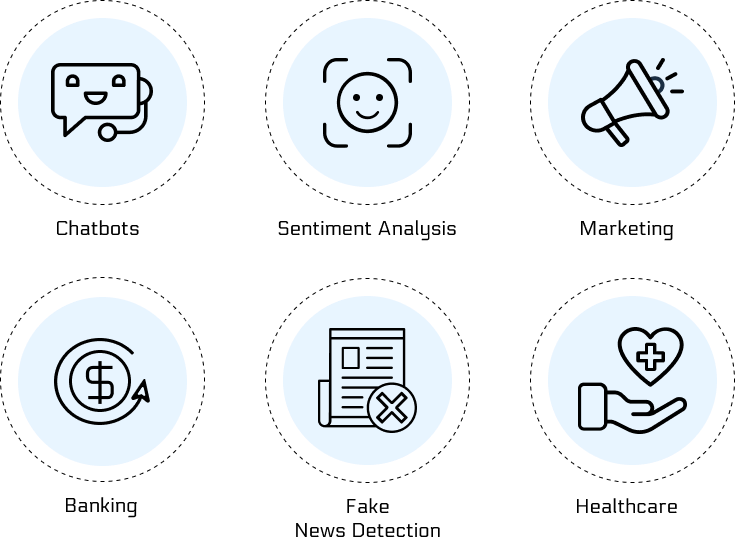
NLP has existed for more than a decade, and its models are becoming more and more powerful, especially after the emergence of Deep Learning and Neural Networks. Thanks to a wide set of tools, NLP allows you to perform various tasks that facilitate or automate work in certain areas and has great potential to change our lives.
Some areas already use NLP quite actively and are on the threshold of a revolutionary transformation:
Economy and Commercial Industries.
The field of economics uses NLP algorithms at almost all levels because its algorithms and methods automate mechanisms for suggestions or recommendations, configure machine translation and sentiment analysis, and much more. In Retail, it is important to evaluate the opinion of users in order to improve service delivery and communication, it is important to always be in contact with the customer. Chatbots come to the rescue, automating the process of answering questions, as well as intelligently and automatically directing relevant requests to technical support.
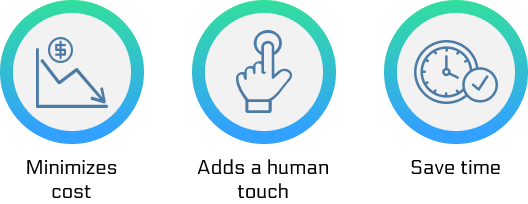
Brands use NLP to see how well they promote their services. For this, they use NLP-based software that analyzes customer sentiment. Marketers or CEOs widely use such tools in the development of an advertising strategy or personal proposals for the implementation of their company.
NLP for customers services improvement
In commercial industries that use different forms of communication with customers, such as social networks, reviews, or customer service, Natural Language Processing helps automate the analog of internal and inbound communication, which also aims to understand the moods of its employees. The Wonderboard uses the “Useful Reviews” tab to analyze general reviews, highlighting useful ones and cleaning up redundant information.
End users use NLP as a tool for auto-correction or spell-checking. It helps to focus more on the content and to have a reliable assistant in correcting spelling. In addition, Natural Language Processing is the core of voice assistants in phones, vehicles, smart homes, or applications for people with disabilities. Salesforce is actively using this feature and provides software to manage customers and improve service.
NLP for Localization Platform
NLP helps to automate and improve the quality of the localization process. Its role in today’s world is to help engage additional target cultures while maintaining text and content that they are comfortable with. This way your text will work in a different market. Your company’s long-term prosperity and existence in the global market often depend on the ability to adapt to new cultures and languages. Adaptation to new markets allows you to expand the client base and thereby achieve profitability.
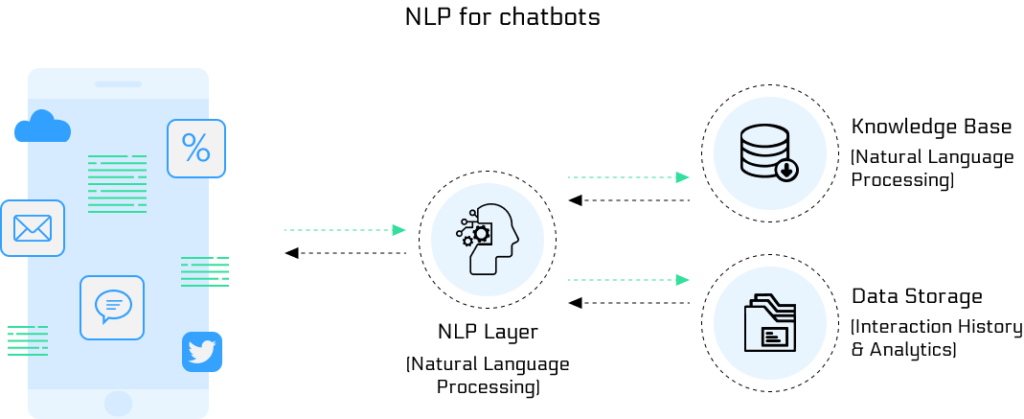
Healthcare Sector
The development of Natural Language Processing has made many adjustments in the field of health care. For a long time, it lacked information about patient behavior, the environment, or other topics that would allow drawing qualitative and necessary conclusions.
Thanks to the use of Natural Language Processing, the system, using computer coding, can segment long medical records, reducing them to the most important points. Together with the use of NLP, a simplified EHR interface was created. It automates the search for information about patients’ doctor appointments.
Equally important in the field of health care is also the provision of information on the sentiments of the content of social networks. Such analytics help to draw conclusions about people’s psychological health and predict problems related to it. Sant Baba Bhag Singh University has already studied this issue. He found that researching sentiments from social media helped providers improve treatment.
Using NLP, analysts have gained access to vast amounts of patient data information to classify them by phenotypes and groups. For example, Winterlight Labs recognizes the unique linguistic patterns used by Alzheimer’s patients.
If we talk about the field of health care, it is worth mentioning that NLP plays an important role in decision-making based on information obtained from semantic data lakes and data warehouses.
Automation of medical services with the help of NLP is an important step on the way to more accurate problem-solving and more accurate analysis of patients.
For example, the MedInReal startup, using Artificial Intelligence and NLP solutions, allows doctors to automate clinical records and populate the EHR. Alex’s artificial intelligence can manage medical transcription and, with the help of analytics, manage patient health.
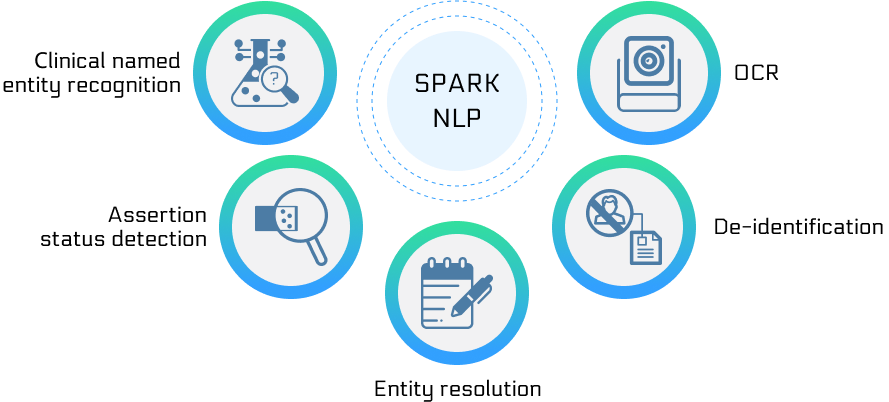
NLP in Finance
Increase data using a virtual assistant or chatbot, which helps save financial resources and increase comfort. Such automation effectively structures requests and complaints to the right department or answers basic questions in a timely and qualitative manner.
NLP for the Legal Field
Automation of legal document processing requires the implementation of NLP. Thanks to this tool can get contract names, key names, and necessary data, and can even make the document anonymous.
NLP for Business
Natural Language Processing finds its use in the business sphere, where it is necessary to extract key information from unstructured documents that usually just come in scanned form. Without Artificial Intelligence, it is almost impossible to do this, but thanks to NLP, this process becomes automated and much faster.
NLP in Action
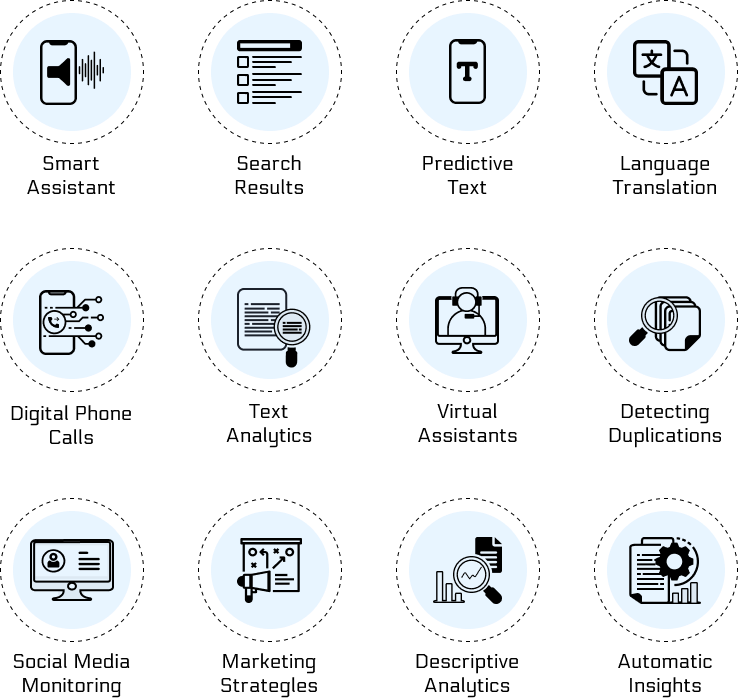
Natural Language Processing significantly improves the work of Businesses, Retail and other areas that it touches. NLP transforms your operations and automates difficult routine tasks. Here’s how you can apply it:
Predictive text
As the name suggests, this type of NLP predicts what you are going to write and can also use your personal words to create universal dictionaries. This is how programs such as Grammarly and Smart Compose work.
Text analytics
The main convenience of NLP is the understanding of unstructured information. Mainly, tools such as intent classification, sentiment analysis, and keyword extractors are used here.
Smart assistants
In your life, you often encounter smart assistants such as Siri or Alexa. They understand our voice and satisfy our requests using natural language generation and processing.
Search Results
NLP is quite efficient in auto-completion, which predicts your searches and saves you time in typing the whole text. Such features are often integrated into e-commerce.
Monitoring of social networks
NLM has the ability to track large flows of customer reactions in order to get analytics on how customers feel and respond promptly to their needs.
Email filters
These filters exist to make it easier for people to organize their Inbox. Gmail can sort your emails by social, promotional, inbox, and spam. Behind all this, again, there is NLP, which supports keywords and directs your message to the right folder.
Survey Analytics
NLP algorithms scan texts and identify positive, negative, or neutral feedback in them. Machine Learning and NLP allow you to structure a huge amount of data and present it to you in a simple way.
Language Translation
The closest example for us is Google Translate, which is engaged in sequential translation, and over time has learned to translate grammatically complex sentences. All this with the help of NLP and Deep Learning.
Chatbots
They will help you effectively manage your customers’ inquiries and complaints at any time of the day. In conclusion, you get cost savings from your funds and employee resources.
Automation of customer service
NLP allows you to quickly and automatically respond to emails, which ensures that every email will be heard. Machine Learning and Routing algorithms are used here
In Conclusion
NLP has already been fully implemented in our everyday life, and every second it is made easier. Nevertheless, they still create a huge potential for optimizing your business or product. You can automate routine processes, direct your resources toward ideas and creativity, transform your business, make it convenient for the client, and create high-quality content and analytics on various issues.
The Amazinum Data Scientists team will help you develop NLP-based solutions that will improve your business.





